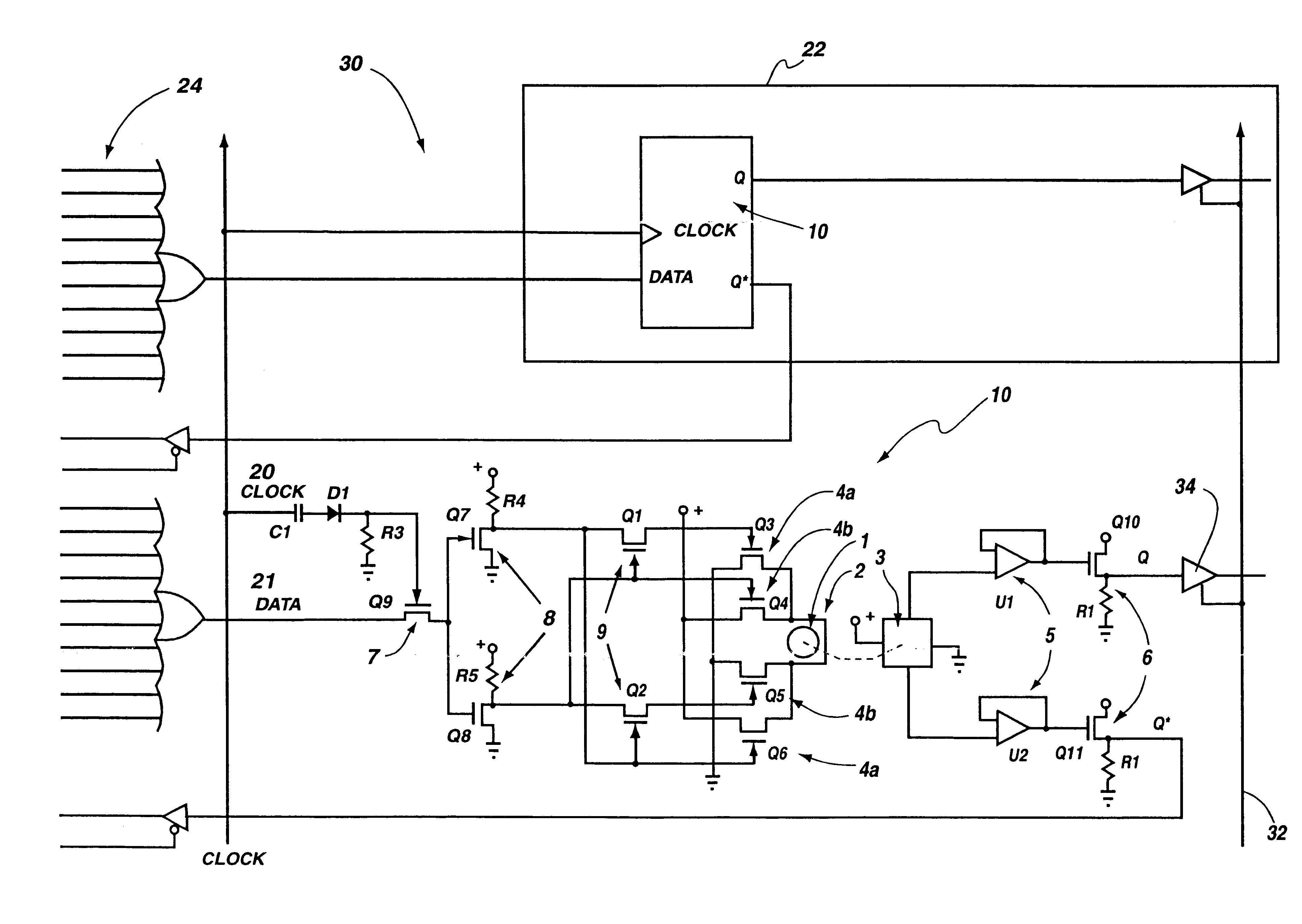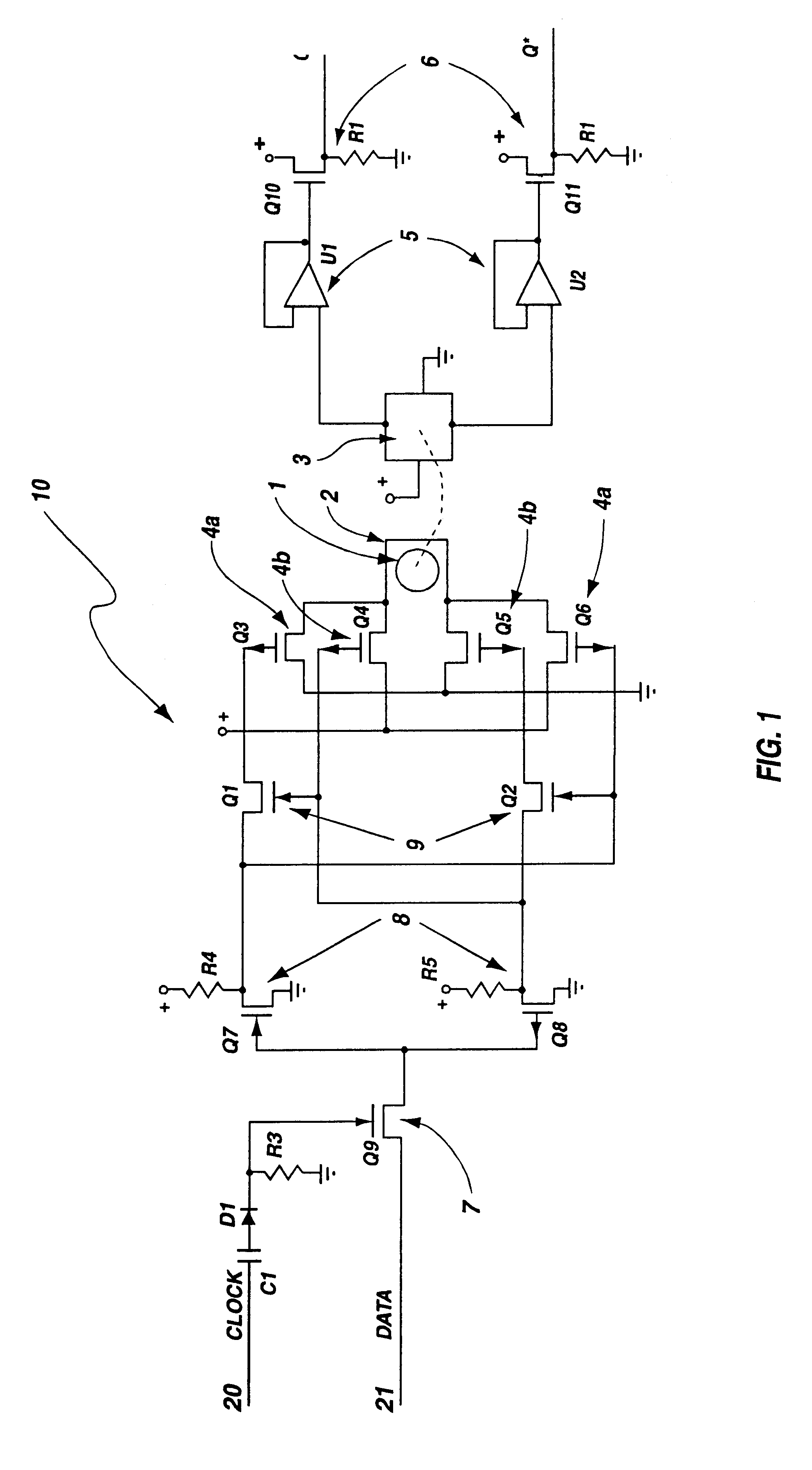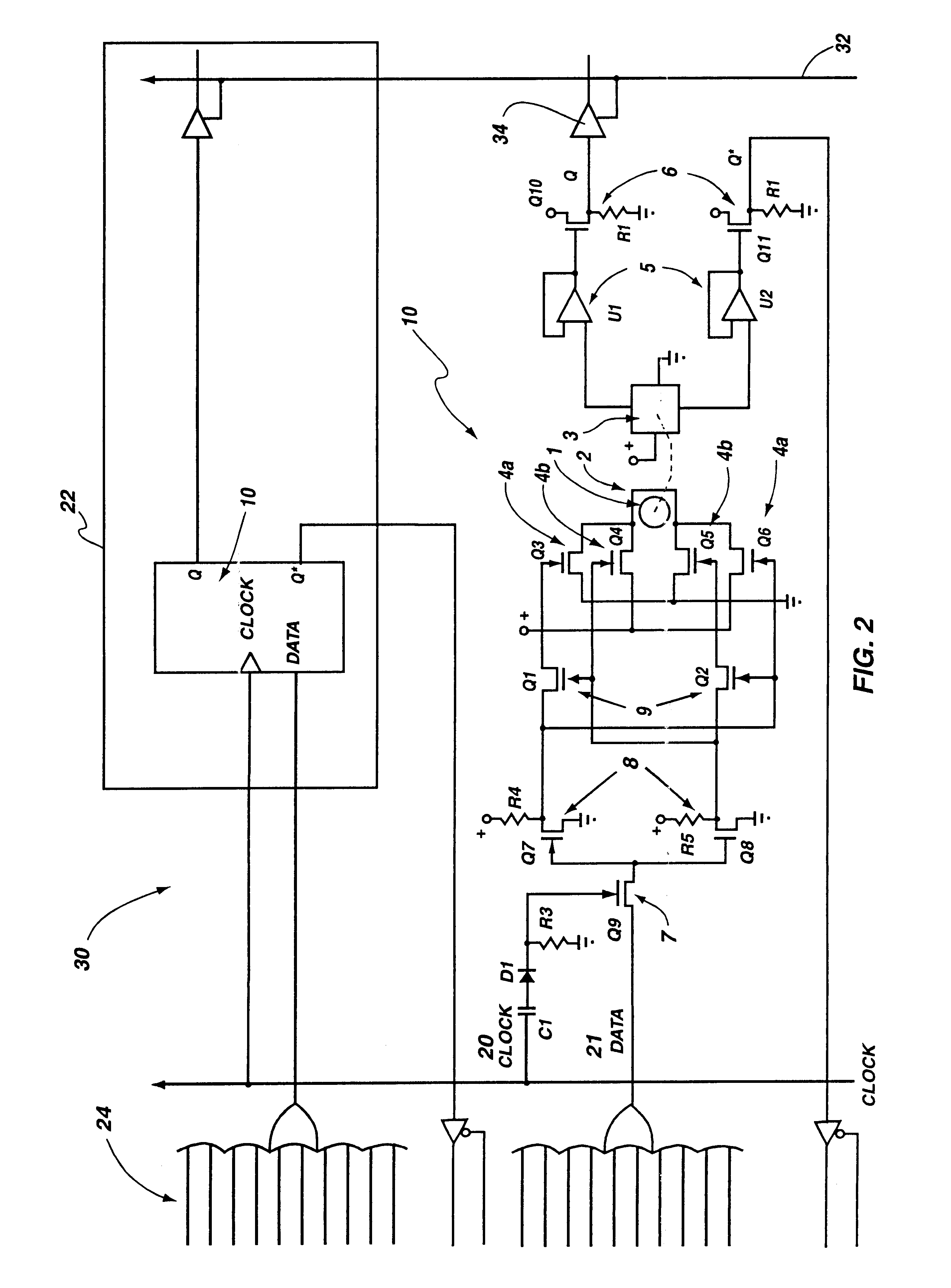Programmable array logic circuit macrocell using ferromagnetic memory cells
a logic circuit and ferromagnetic memory technology, applied in the field of programmable array logic circuit macrocells using ferromagnetic memory cells, can solve the problems of limiting the useful life of the last two technologies, and the drawbacks of the latter, and achieve the effects of eliminating write fa, saving power during operation, and eliminating write fa
- Summary
- Abstract
- Description
- Claims
- Application Information
AI Technical Summary
Benefits of technology
Problems solved by technology
Method used
Image
Examples
Embodiment Construction
For the purposes of promoting an understanding of the principles of the invention, reference will now be made to the exemplary embodiments illustrated in the drawings, and specific language will be used to describe the same. It will nevertheless be understood that no limitation of the scope of the invention is thereby intended. Any alterations and further modifications of the inventive features illustrated herein, and any additional applications of the principles of the invention as illustrated herein, which would occur to one skilled in the relevant art and having possession of this disclosure, are to be considered within the scope of the invention.
For the purpose of providing background material which may in some respects illustrate the state of the are, the following books are herein incorporated by reference for non-essential material: "Programmable Logic Handbook," fourth edition, by Monolithic Memories Inc., 2175 Mission College Blvd., Santa Clara, Calif.; and "Practical Desig...
PUM
 Login to View More
Login to View More Abstract
Description
Claims
Application Information
 Login to View More
Login to View More - R&D
- Intellectual Property
- Life Sciences
- Materials
- Tech Scout
- Unparalleled Data Quality
- Higher Quality Content
- 60% Fewer Hallucinations
Browse by: Latest US Patents, China's latest patents, Technical Efficacy Thesaurus, Application Domain, Technology Topic, Popular Technical Reports.
© 2025 PatSnap. All rights reserved.Legal|Privacy policy|Modern Slavery Act Transparency Statement|Sitemap|About US| Contact US: help@patsnap.com



